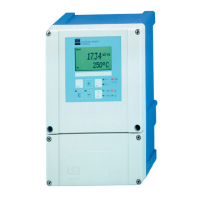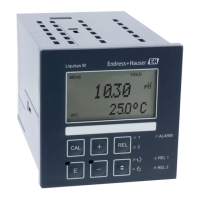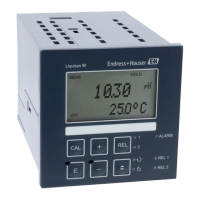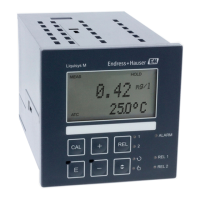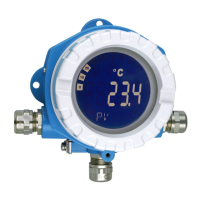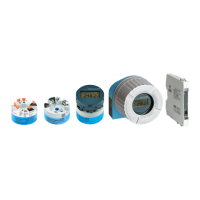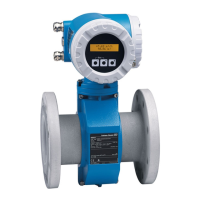Chemicals burns to the eyes and skin
‣ Wear protective goggles and safety gloves.
‣ Clean away splashes on clothes and other objects to prevent any damage.
‣ Pay particular attention to the information provided in the safety data sheets for the
chemicals used.
Clean away fouling on the sensor as follows depending on the particular type of fouling:
• Oily and greasy films:
Clean with grease remover, e.g. alcohol, acetone, as well as hot water and dishwashing
detergent if necessary.
• Lime and metal hydroxide buildup:
Dissolve buildup with diluted hydrochloric acid (3 %) and then rinse thoroughly with
plenty of clear water.
• Sulfidic buildup (from flue gas desulfurising or sewage treatment plants):
Use a mixture of hydrochloric acid (3 %) and thiocarbamide (commercially available) and
then rinse thoroughly with plenty of clear water.
• Buildup containing proteins (e.g. food industry):
Use a mixture of hydrochloric acid (0.5 %) and pepsin (commercially available) and then
rinse thoroughly with plenty of clear water.
8.1.3 Simulation of conductive sensors for device test
Check a measuring device for conductivity by replacing the measuring section and
temperature sensor with resistors. Simulation accuracy is dependent on the accuracy of the
resistors.
Temperature
Pt 100 replacement resistors
Temperature (°C/°F) Resistance value
The values in the right-hand table are valid,
if no temperature offset is set on the
transmitter.
With the temperature sensor type Pt 1000,
all the resistance values are increased by a
factor of 10.
Connect the temperature equivalent
resistor in a three-line system.
To connect decade resistors instead of
the conductivity sensor, you can use
the "Conductivity Test Adapter" service
kit (order no. 51500629).
-20/-4 92.13
-10/14 96.07
0/32 100.00
10/50 103.90
20/68 107.79
25/77 109.73
50/122 119.40
80/176 130.89
100/212 138.50
200/392 175.84
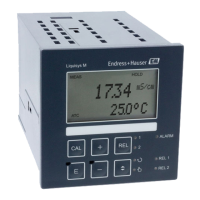
